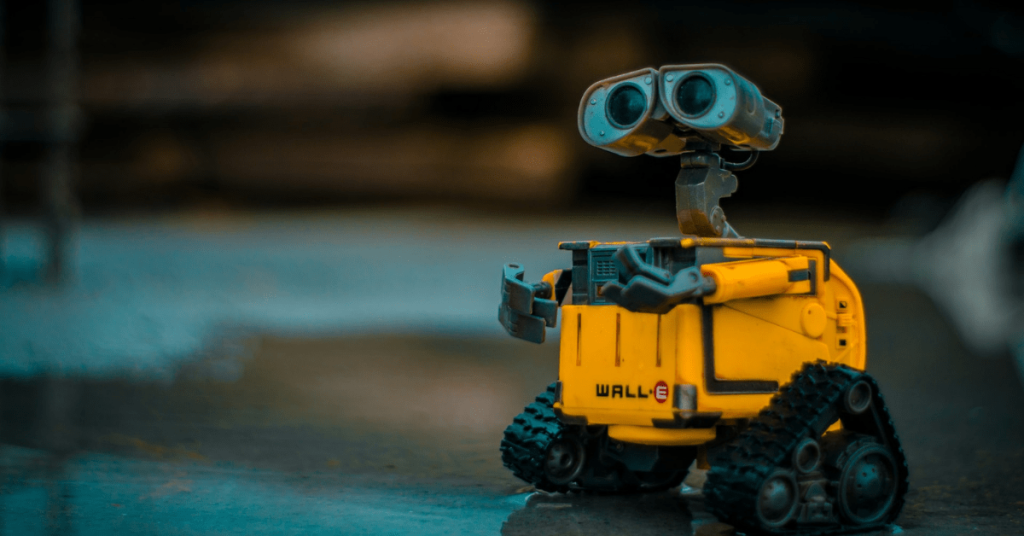
Has anyone noticed that service just isn’t what it used to be?
Recently, I took a friend to one of my favorite Jamaican restaurants. Normally, they do a good job there. But on this day, the service was extremely slow.
After waiting a long time for our food to arrive, the owner came by our table to apologize. She let us know that she was the only one working that day.
This meant she literally had to do every job there: Cooking, serving, answering the phone, and running the take-out.
We asked her where her staff was, and she laughed. Since reopening from the lockdowns, they have been struggling to fill positions. She explained that she has tried to hire new workers, but it’s been virtually impossible because no one is applying.
We could tell she was visibly exhausted, and so we wished her the best and I left her a big tip.
Later on, this got me thinking:
- How many other restaurants are facing similar challenges across the country?
- How long can things last like this?
- What happens if people never come back to fill all of those empty positions?
This post may contain affiliate links. If you purchase a product or service from an affiliate link, we may receive a small commission. This supports our website and there is no additional charge to you. Thank you!
Staffing Shortages Across the Country
My story is in no way unique. Nearly everyone I’ve told this to has shared a similar experience with pretty much the same theme: Slow or poor service due to a mysterious lack of workers.
According to the National Restaurant Association, this is an epidemic that’s been sweeping the country ever since restaurants reopened in 2020. As things stand currently:
- 81% of sit-down restaurants are understaffed
- 75% of fast-food restaurants are understaffed
While some progressives would argue that wages should be raised and working conditions need to be improved, what I see is history on the brink of repeating itself.
What do I mean by this?
One word: Robots
The Rise of Automation in Factories
As an engineer and an investor, I’ve always been fascinated both by the history of technology as well as where it’s heading next. And when it comes to the use of robots or “automation” to perform tasks that humans either can’t or don’t want to do, there’s no better example than what’s been happening with automotive factories over the past 50 years.
Back in the 1970s when unions really started gaining power, the automakers began to look to technology for help. As the cost per worker rose, the case to have mundane tasks once performed by humans made more financial sense with robots.
According to a study from MIT, the average “displacement” (or job loss) from 1947-1987 was 17 percent. However, there was also 19 percent reinstatement into a new role, so this was okay.
Unfortunately, from 1987-2016, things changed. The displacement rate was 16 percent while the reinstatement rate was just 10 percent. In other words, those jobs that were being replaced were not coming back.
The Rise of Zoom During COVID
Does anyone remember using or even hearing about Zoom before the Covid-19 pandemic started? Very few did!
Before 2020, the web conference space was dominated by just a handful of heavy-hitters like Skype and WebEx. Zoom was a relatively unknown small company with a product used by only 10 million daily meeting participants.
Then, in a brilliant twist of marketing, they made the service available for free right away at the beginning of the COVID pandemic. This helped their rates to rise to over 300 million daily users; an increase of 2,900% in a matter of months!
Today, Zoom is a regular household name known by all ages. From a business perspective, there’s a lot to be learned about this company.
But in a much broader setting, we can also learn something about human nature. In times of need, there’s a willingness for people to accept and even embrace technology as the solution.
But Robots Working in Restaurants? …
… Yes, just like automotive factories and school children who are stuck at home because of a pandemic, I definitely can see a future where robots carry out certain repetitive duties at restaurants.
Anyone who’s ever been to the Miracle Mile Shops at the bottom of the Planet Hollywood casino in Las Vegas has already seen this in action. There’s a robot bartender there named Tipsy that will make and serve customers a variety of alcoholic drinks. It’s quite amazing to see Tipsy in action, and over the years its become a one-of-kind attraction for tourists.
See Tipsy in Action:
But Tipsy isn’t the only robot working in a restaurant setting. Several companies want to adopt AI and robotics to help restaurants solve their staffing shortages. Here’s what they’ve come up with.
Robot Cooks
For anyone who’s ever worked in fast food at the fry station, they know it can be a pretty undesirable job. That’s where Miso Robotics stepped in with the Flippy 2, a compact back-of-the-house robot that requires minimal intervention.
Originally designed to flip burgers, a task for the predecessor “Flippy 1”, Miso CEO Mike Bell found during testing that the fry-station is more labor-intensive than the grill. Therefore, this was a role that made a better candidate for automation.
See Flippy in Action:
Flippy 2 is already being used at the following restaurants:
- White Castle
- Cali Burger
- Levy Restaurants
Miso also announced a partnership with Jack in the Box & Inspire Brand the parent company of Buffalo Wild Wings.
Restaurants can lease the Flippy 2 for around $3,000 per month.
Additionally, Miso Robotics has other robots in the works:
- Chipotle is working with Meso to test Chippy, a robot for making tortilla chips
- Panera Bread is working with Meso to test automated coffee brewing
If you’re interested in investing in Miso Robotics, see details here.
Server Robots
Doing a repetitive back-of-the-house job like the fry station may be ideal for robots. But can they also be used for front-of-the-house jobs too?
Absolutely!
Take the Servi robot from Softbank. This little Star Wars-like robot is capable of taking plates of food from the kitchen to the dining room where they can be delivered to the customers.
See Servi in Action:
How does it know not to bump into anyone? Similar to a Roomba vacuum or self-driving car, Servi robots use 3D cameras and laser-sensing technology to navigate around people and other tables inside the restaurant.
Carlos Gazitua, owner and CEO of Sergio’s Restaurant chain, said that the Servi robots will “Create 25-30 percent more efficiency for our wait staff so they can focus more on our guests and in return make more money by taking more tables and/or creating a better hospitality experience”.
The cost to lease a Servi robot from Softbank is approximately $1,000 per month.
Servi isn’t the only robot waiter on the market. Richtech Robotics has also been promoting its latest product: the Matradee.
See the Matradee in Action:
The Matradee is capable of taking up to four trays of food and dishes to customers. It uses LiDAR, among other technology, to maneuver and detect its surroundings up to 20 feet. It’s even capable of opening kitchen doors.
The Matradee costs around $20,000 to purchase.
Bathroom Cleaning Robots
Let’s not forget that there’s more to a restaurant operation than just good food and speedy service. Nothing can ruin the experience quite like a disgusting bathroom that’s in desperate need of a good cleaning.
New York-based startup Somatic has a solution for this issue with their product: the BCR-01.
See BCR-01 in Action:
Comparing it to a “minifridge with a robot arm attached to the front”, CEO Michael Levy says he was inspired to create the BCR after years of working at his grandfather’s restaurant. He wanted a robot that is well-focused on replacing a job that’s generally regarded as both “dirty” and “dull.”
The BCR can work for around eight hours straight. Because all commercial bathrooms built after 1994 are ADA compliant, everything is bolted down to the floor making it easy and predictable for the robot to navigate. It’s even capable of opening doors and riding the elevator to get around buildings with multiple floors (such as offices, airports, casinos, etc.).
The BCR can be leased for about $1,000 a month.
The Robots Are Coming to You
If all of this technology can be adapted to the inside of a restaurant, could it also be used “outside” of the restaurant too?
… You bet!
A new startup called Stellar Pizza plans to hit the streets of Los Angeles with their latest invention: a robotic pizza cooking truck. Created by a trio of SpaceX ex-pats, the company says its trucks are capable of cooking a pizza from scratch in less than five minutes and producing a pizza every 45 seconds at max capacity.
What Does This Mean for Us?
Surely with all of these new inventions, we will all be out of jobs soon, right?
Machines replacing humans in the workplace have been a perpetual concern since the dawn of the Industrial Revolution. And it’s become increasingly more relevant since the rise of automation over the past few decades.
However, let’s keep a few things in perspective. For starters, these robots wouldn’t necessarily be considered if more people were willing to work and carry out the services that the robots will fulfill.
Another point that seemed to be a unanimous theme from each of the robot manufacturers is that their products aren’t intended to replace humans. The intention is that they do the jobs that no one wants to do so that servers and restaurant owners can focus on providing customers with an experience that brings them back.
As with every new technology, it solves a problem but then creates a brand new industry that humans will need to manage. Remember before computers or the internet existed, there was no such thing as IT or web development. Now, these are thriving fields consisting of multiple facets and opportunities for employment.
The same could be said for this new breed of robots. As they become more commonly used, there will be a need for people to:
- Build them
- Program them
- Service and repair them
- Improve and innovate new models
As for the restaurants of today, the situation is simple. It’s not so much that they want these robots for better efficiency or higher profit margins. When I think back to my experience with my friend at my favorite Jamaican restaurant, it boils down to a matter of survival and being able to keep the doors open.
Readers: How do you feel about automation coming to restaurants?
Would you be okay with a robot that cooks your food or brings the plates to your table?
If you were a restaurant owner, how are you dealing with the labor shortage?
PS: Remember to follow Expanding Wallet on YouTube.
Disclaimer: I own shares of Miso Robotics. This article is for educational purposes only and is not a recommendation for or against any stocks or other investments.




